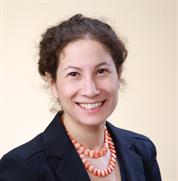The RSA Japan Fellows Network recently held an interactive event designed to promote cultural understanding through making traditional Japanese sweets known as Wagashi. Below, our RSA Connector, Tania Coke describes the experience.

Sanae Okazaki FRSA makes sweets. But not just any sweets. She makes wagashi which are the Rolls Royce of Japanese sweets. On 30th October 2016 she ran a workshop to give us a chance to make (and eat) these special sweets.

Twenty people gathered that Sunday afternoon at Mannenzan Shourinji Temple – a 400 year old temple rebuilt with award-winning architecture and reopened only 20 days prior to this event – to make a particular kind of wagashi called higashi (a recipe that contains very little moisture and therefore lasts longer).
The session began with a welcome from the temple priest who pointed out that Buddhism, like wagashi, places great importance on the changing seasons. It being autumn, Sanae had prepared wooden moulds and washi (Japanese paper used to package the sweets) with seasonal designs such as maple leaves. Under her guidance we mixed wasanbon sugar with water and then packed the crumbly mixture into the moulds. The delicate sweets are then popped out of the moulds, taking great care not to damage them. We also made our own gift wrap boxes using washi, card and gold string. Along the way we learnt that the wasanbon sugar we used is made exclusively in Japan, using a method dating back to the Edo period (1603-1868) and that wagashi moulds are produced by less than ten remaining mould-makers in the world.

Sitting in the exquisite calm of this newly opened temple, concentrating on the simple but precise actions of mixing, tamping, folding, gluing and tying, we were taken back to the times when things were done with precise and individual care, with an awareness of the seasons and the environment, using the simplest and best ingredients and tools, including the greatest tool of all: the human being, with its hands, eyes, imagination and awareness.
 Once the sweets were all made and packed in their little boxes, we sat down to sample our creations, along with matcha green tea expertly prepared by the priest. It was a chance to share our thoughts on the experience of making wagashi. One person was struck by the precision and artistry required within such a simple process. Another commented that the simplicity allowed us to take in more of the total experience, including the architecture of the building and the wind that blew in from outside. For myself, I was left with the feeling of the new possibilities that come from looking back to old traditions and experiencing them in a new context.
Once the sweets were all made and packed in their little boxes, we sat down to sample our creations, along with matcha green tea expertly prepared by the priest. It was a chance to share our thoughts on the experience of making wagashi. One person was struck by the precision and artistry required within such a simple process. Another commented that the simplicity allowed us to take in more of the total experience, including the architecture of the building and the wind that blew in from outside. For myself, I was left with the feeling of the new possibilities that come from looking back to old traditions and experiencing them in a new context.
Many thanks to Sanae for conceiving and creating this unique experience, to the temple for hosting it, and RSA for supporting it. In the work we do as RSA Japan Fellows’ Network, we will not forget that progress comes from honouring both the old and the new.
For more information on the RSA Japan Fellows Network, please contact Tania Coke.
Related articles
-
The RSA's Heritage Index: A view from Italy
Maurizio Fantato FRSA
What does the RSA's work on Heritage, Identity and Place mean in an international context, and how can it be used to further understanding of heritage in schools? Maurizio Fantato blogs about how it's being used in Italy.


Be the first to write a comment
Comments
Please login to post a comment or reply
Don't have an account? Click here to register.